Time Blocking 101

Introduction
Time management is something that people struggle with throughout their life. In this blog, I intend to share the reasons why we struggle with managing our time, as well as introduce a technique called time blocking, which is used by many people who are highly productive. One of the early adopters of this technique is Benjamin Franklin. Finally, I also share some practical examples of how I use time blocking, and how you can use it for your own schedule as well.
Why we struggle with Time Management?
Let’s say we have 2 tasks to complete. Task1 is an urgent one, and upon completion of it we get a reward immediately. Task2 is not urgent, but it is important that you finish it. However, upon completion of it, you get the reward only after a long period of time.
NOTE: I have not given practical examples for Task1 and Task2, since the very notion of a particular task being urgent and/or important varies for different people. Feel free to assume your own Task1 and Task2.
When asked to choose a task between Task1 and Task2 to complete, most people choose Task1, i.e., the one which is urgent and gives you a reward immediately. The fact that the task is urgent gives a false sense of information that it must be done as soon as possible even if it is not important. We are more likely to prioritize the urgent tasks over the important ones, regardless of the much better payoffs of the important tasks in the long run. This is known as the mere-urgency effect.
This indicates the first problem that causes bad time management: bad prioritization of tasks.
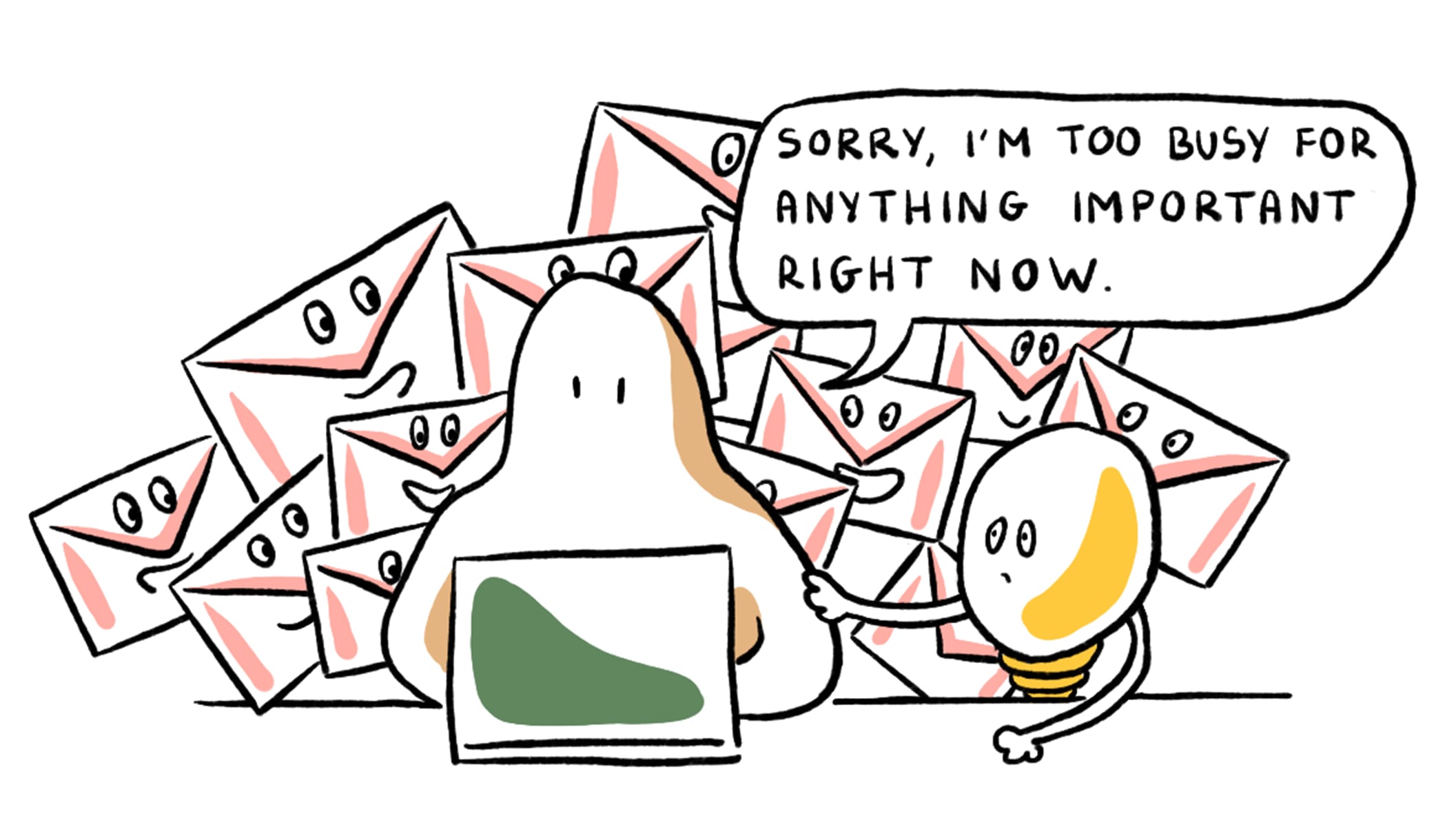
When we get a new task to complete, we fix in our mind that we have this so-and-so task that is to be completed within a particular deadline. After this, two things might happen – either we get another task, and we totally forget about the previous task, or we keep thinking about this task and cannot focus on any other task that we have to do. Either way, the outcome does not go in favor for us. These unfinished tasks that lure inside our mind are called open loops.
The second problem that causes bad time management: open loops.
This consistent, unproductive preoccupation with all the things we have to do is the single largest consumer of time and energy.
– Kerry Gleeson
Unfinished tasks stay better and longer in our short term memory (than finished tasks), until we finish them. This is known as the Zeigarnik effect, named after the Russian Psychologist – Bluma Zeigarnik. However, we can fool the brain into thinking the task is done by simply writing it down.
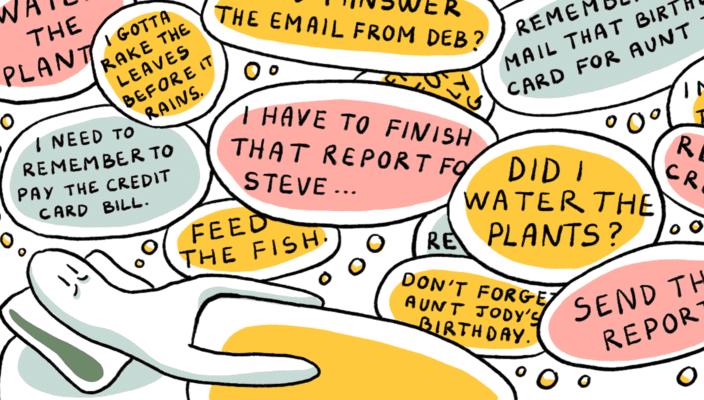
In order to better prioritize your tasks, you first need a safe place to store all your tasks. And NO, your brain is NOT that place. Transferring the tasks into an external system (i.e., simply writing it down in a to-do list) allows us to forget the tasks inside our head, but still preserve the idea. If not, we have to remember everything in our head, and our brain is not good at remembering a lot of stuff, we tend to forget things eventually.
Solution to bad prioritization of tasks and open loops: use a to-do list.
Your mind is for having ideas, not holding them.
– David Allen
How Time Blocking works?
We have now solved the problem of open loops by using a to-do list. This will drastically reduce the anxiety and pressure inside your head, as now you don’t have to remember all your tasks. You can simply look at your to-do list and see what tasks you have to complete, and by when. Now comes the question, “How do I find time to complete my tasks?”
This is where time blocking comes into play. Time blocking, simply put, is an effective yet simple way to take control of your entire day. It lets you control how you spend your entire day (down to the very minute, if you want to). You basically divide your entire day into blocks of time (of varying durations). Each time block you create is dedicated for finishing a particular task. This creates a schedule for your day, which makes it easier to complete the task, than just by looking at a list of all tasks in your to-do list.
The key to making this method work for you is prioritizing your tasks. Tasks with higher priority get a time block that has a longer duration, and is placed usually in the beginning of the day (when you’re still fresh and motivated). To get the most out of time blocking, create time blocks so that your entire day is filled with it. This does not mean you have to work on your tasks the entire day. Creating time blocks for the entire day involves blocks for your daily routines, having food, and even your leisure time. If you watch a movie for 3 hours, it does not mean that you wasted those 3 hours. However, if you do not have a clue as to how your evening went, then that unplanned time is wasted time.
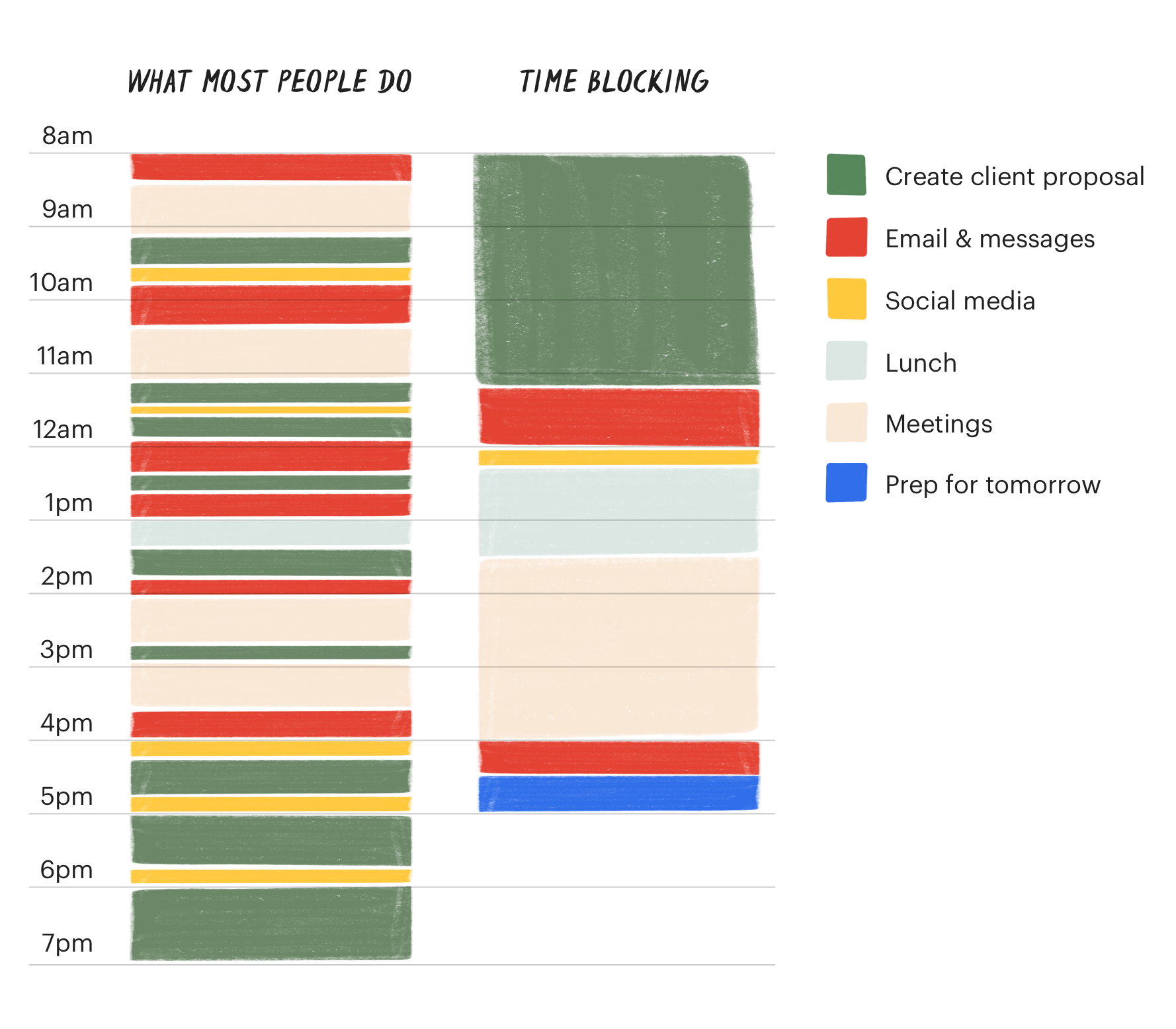
Time blocking actually enables you to complete more tasks within a given amount of time. Parkinson’s Law states that work expands so as to fill the time available for its completion. This means that if you decide to complete a task in the evening, you are more likely to take up the entire evening for it. However, if you dedicate a time block (say from 6:00pm to 7:00pm), then you have a restriction on the time available to complete the task, which will result in less distraction and more concentration because you know you need to complete that task within the given hour. This can also help you if you are a perfectionist who takes way too much time to give a perfect output, instead of giving a good enough output.
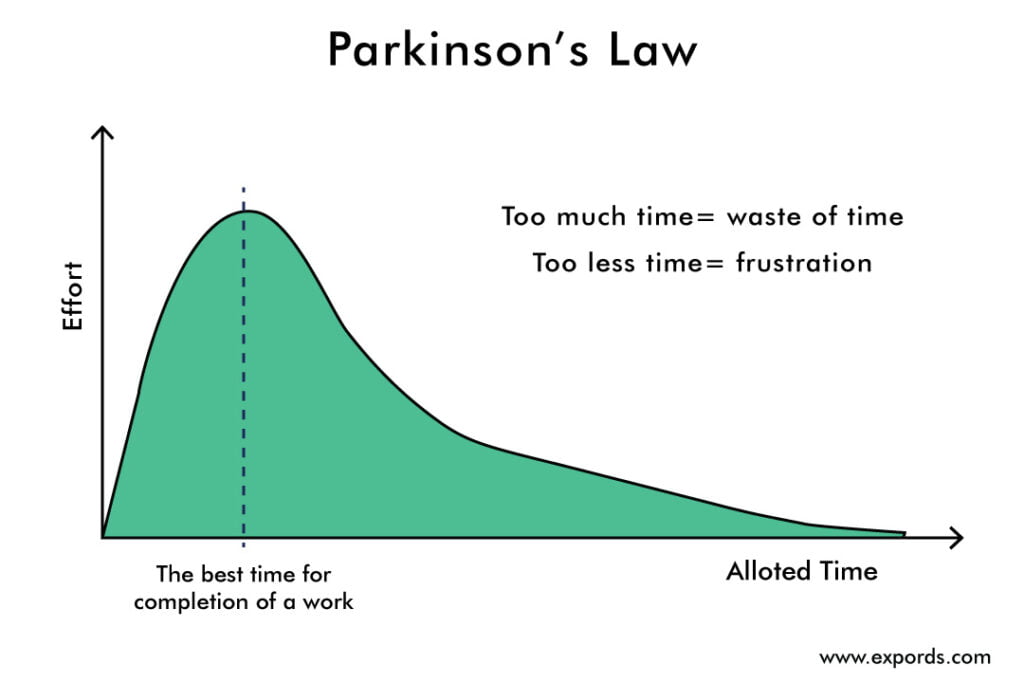
Deep Work and Time Blocking
Time blocking might seem very simple. After all, it looks very similar to a timetable given in schools. The catch here is that you decide how your timetable is going to be for the next day. You create the blocks for tasks that you want to do. You set the duration for which you want to work on a particular task. You control how your entire day is going to be. This enables you to work on tasks in a very effective way.
By the very nature of how it works, time blocking promotes deep work. Simply put, deep work is when you work on a particular task for a fixed period of time, without any distractions or breaks. You have your full concentration on the task that is scheduled for the particular time block. No other tasks must interupt this dedicated time. This allows you to concentrate on deep levels, and thus your output will also be much better. It helps you quickly learn hard things and also produce at an elite level.
Deep Work: Professional activities performed in a state of distraction-free concentration that push your cognitive capabilities to their limit.
– Cal Newport
When people multitask, or even switch from one task to another, their attention does not immediately follow. A residue of your attention remains stuck thinking about the previous task. This effect is known as attention residue. This residue gets thick if you put low-effort and do not complete the previous task. By leveraging time blocking and deep work, we can escape from the attention residue effect.
To learn hard things quickly, you must focus intensely without distraction. To learn, in other words, is an act of deep work.
– Cal Newport
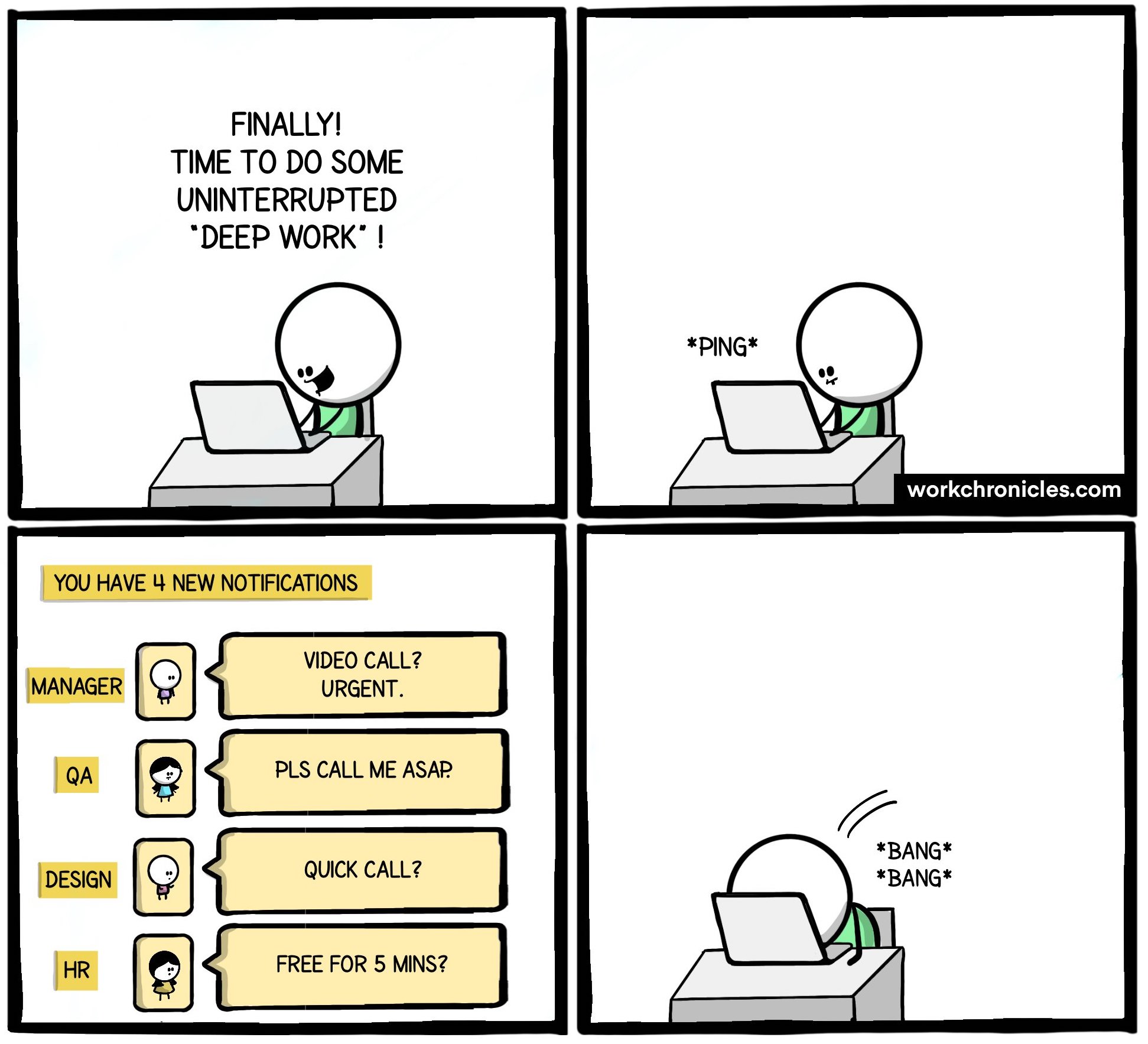
When starting with time blocking and deep work, there are 2 common problems that you might face:
- You might not be able to finish a task within the dedicated time block. This just means that your estimated duration for completion of the task was wrong. You can easily solve this problem by tracking how long you took to complete the task, and then later when a similar task pops up, you’ll have a better estimate of the duration.
- There might be new obligations that pop up that require immediate attention.
If you face any of the above problems, simply reschedule the task later. It does not matter how many times you reschedule a task. What matters is that you stick to your schedule properly. You can also add free time blocks that are scheduled, but have no task attached to them (not even your leisure time). This block basically means that you have no idea what to do during that time of your day. When new obligations pop up, you can simply reschedule your current task to the free time block.
The batching of hard but important intellectual work into long, uninterrupted stretches allows one to produce at an elite level.
– Cal Newport
Practical Examples
By now you must know that for better time management, we need two things:
- To-do list: A safe and trusted place where all your tasks go into.
- Calendar: A daily scheduled calendar that enables you to divide your entire day into blocks of time.

You are free to choose your own style of tools. Perhaps the most simple way would be to use pen and paper. However, rescheduling your time blocks and moving unfinished tasks to other days would not be so easy when using a pen and paper. That is why I suggest using dedicated apps that work well for task management and time blocking.
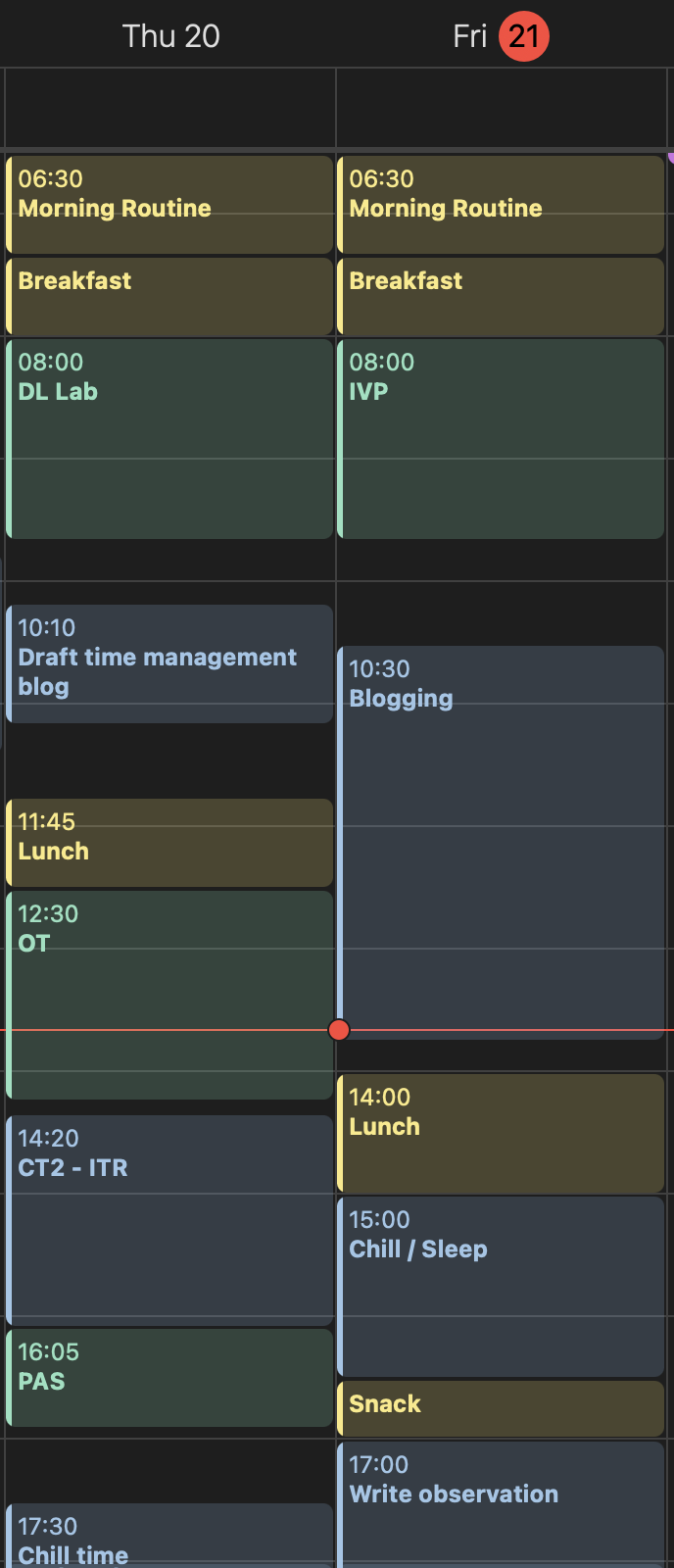
I recommend using Tick Tick for task management, and Google Calendar for time blocking. These apps are free to use, and are available in all platforms. Thus, you can use them on your phone, laptop, and even on your smartwatches. The apps I use are Things 3 for task management, and Apple Calendar for time blocking. These apps are specific to Apple Ecosystem, and are not free to use. However, I did start out with the free apps I recommended above. I suggest using the free apps, and if you feel a restriction, only then switch to paid apps. Once you are ready with your tools, you can start implementing what we learned.

Step 1: Add new tasks to your to-do list
This is the most important habit that you’ll have to pick up. Any new task that comes up goes straight into your to-do app. You can create multiple lists inside the app. Tasks should be added to a list called the inbox. By the end of the day, the inbox list should contain all the tasks (along with their deadline) that you have collected throughout the day.
Step 2: Prioritize the tasks
Now that the day is over, and you have collected all tasks, create new lists for each Area/Project the tasks might belong to. For example, all tasks related to academics can go under a separate list. The goal is to move all the tasks from the inbox list to a separate list, grouped by some factor. Then, prioritize the tasks and give proper deadlines.
Step 3: Time block tomorrow
After prioritization of tasks, start implementing the time blocking technique by scheduling the next day. Divide the entire day into blocks, and attach each task to each block. Estimate the duration of each task and accordingly set the duration of the time block. Make sure to include your daily routines as well to the calendar. Time block the most important and big tasks first. Later, you can find gaps to fit in blocks for small tasks. Add in the parts where you chill with friends, hang out with people, and even your own personal time (maybe for listening to music, watching movie, etc.).
Step 4: Stick to your schedule
Ideally, you must now have a schedule (built by you) for the entire day, from when you wake up, till when you hit the bed. Follow your schedule strictly. It is easier said that done as you’ll be constantly hit with new tasks, plans and other obligations. In the midst of following your schedule, don’t forget to follow Step 1. This requires both dedication and discipline. Do note that I’m not suggesting you to work the entire day, just to follow your schedule. Work on tasks when you have scheduled them, and have fun when you have scheduled them.
If any new obligation come up that requires immediate attention, feel free to reschedule your day accordingly. Sometimes, you might have to reschedule your entire day, which is absolutely fine. In rare cases, you might not be able to follow your schedule due to some external factor, which is also okay. If you fail to stick to your schedule for one day, don’t lose hope. Time block the next day and try again.
Conclusion
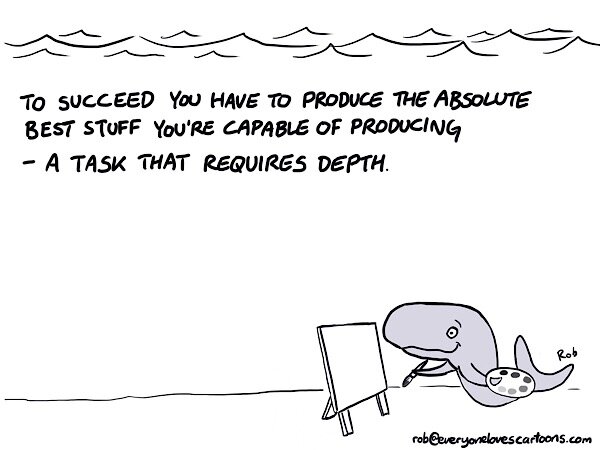
Time blocking is a simple yet very effective method that is used by highly productive people such as Elon Musk and Bill Gates. It lets you control your entire day, and makes sure that not a single minute of your time goes wasted. In order to leverage this technique and make use of it, one must be motivated and have discipline over themselves. The best part about this technique is that it works for everyone, irrespective of your domain of work. I hope this blog was informative and inspired you to get into better time management.
Happy Working!